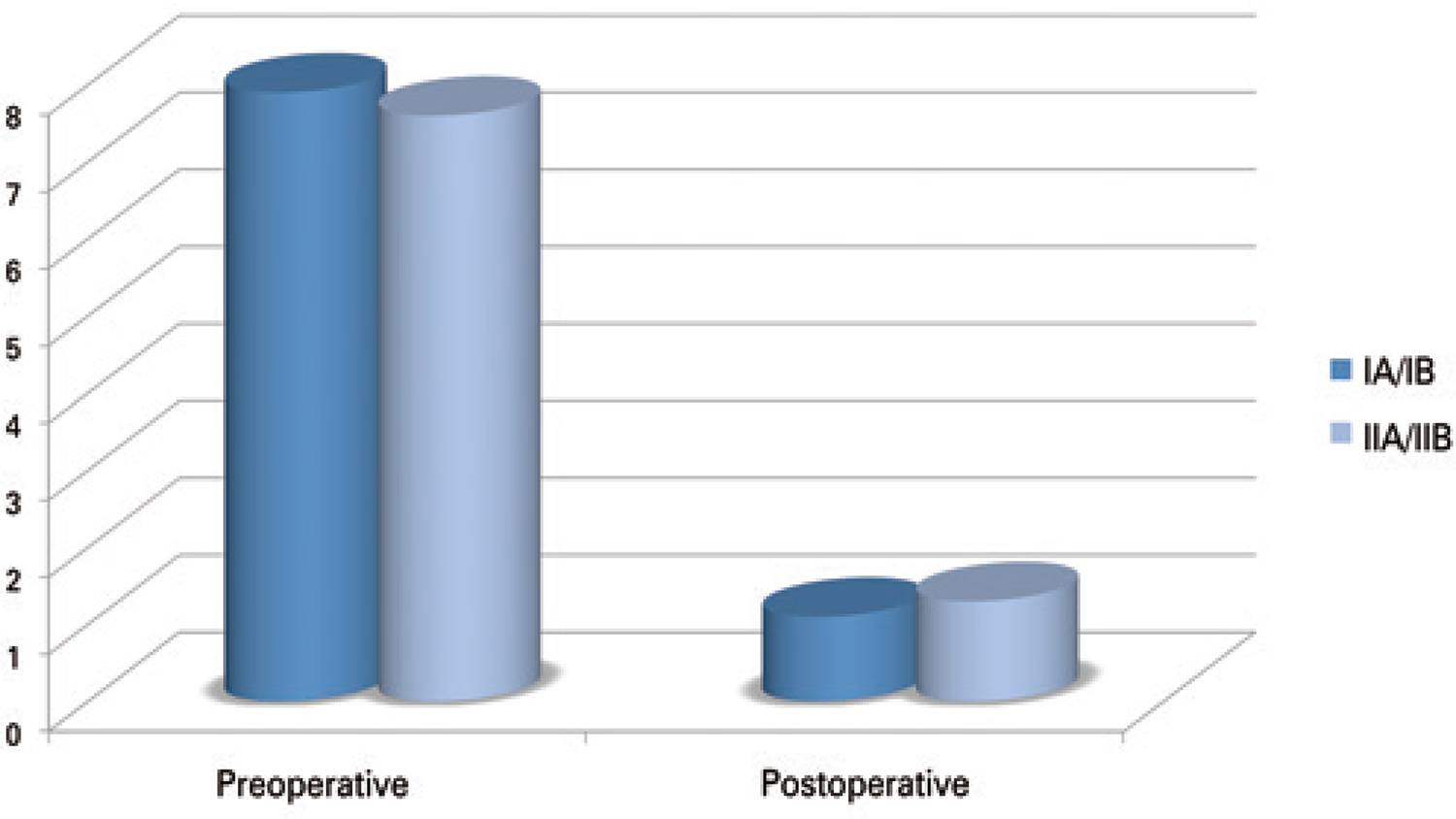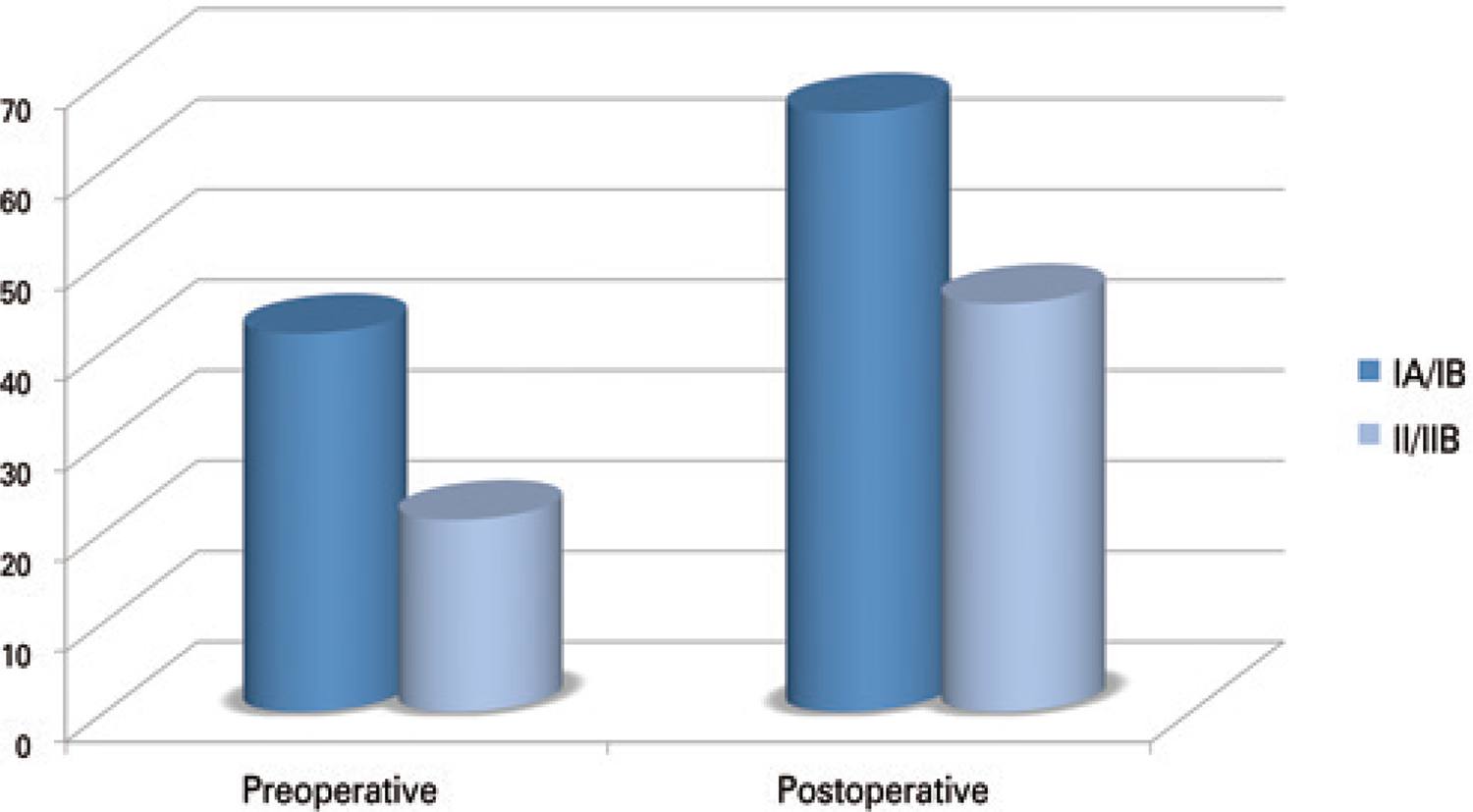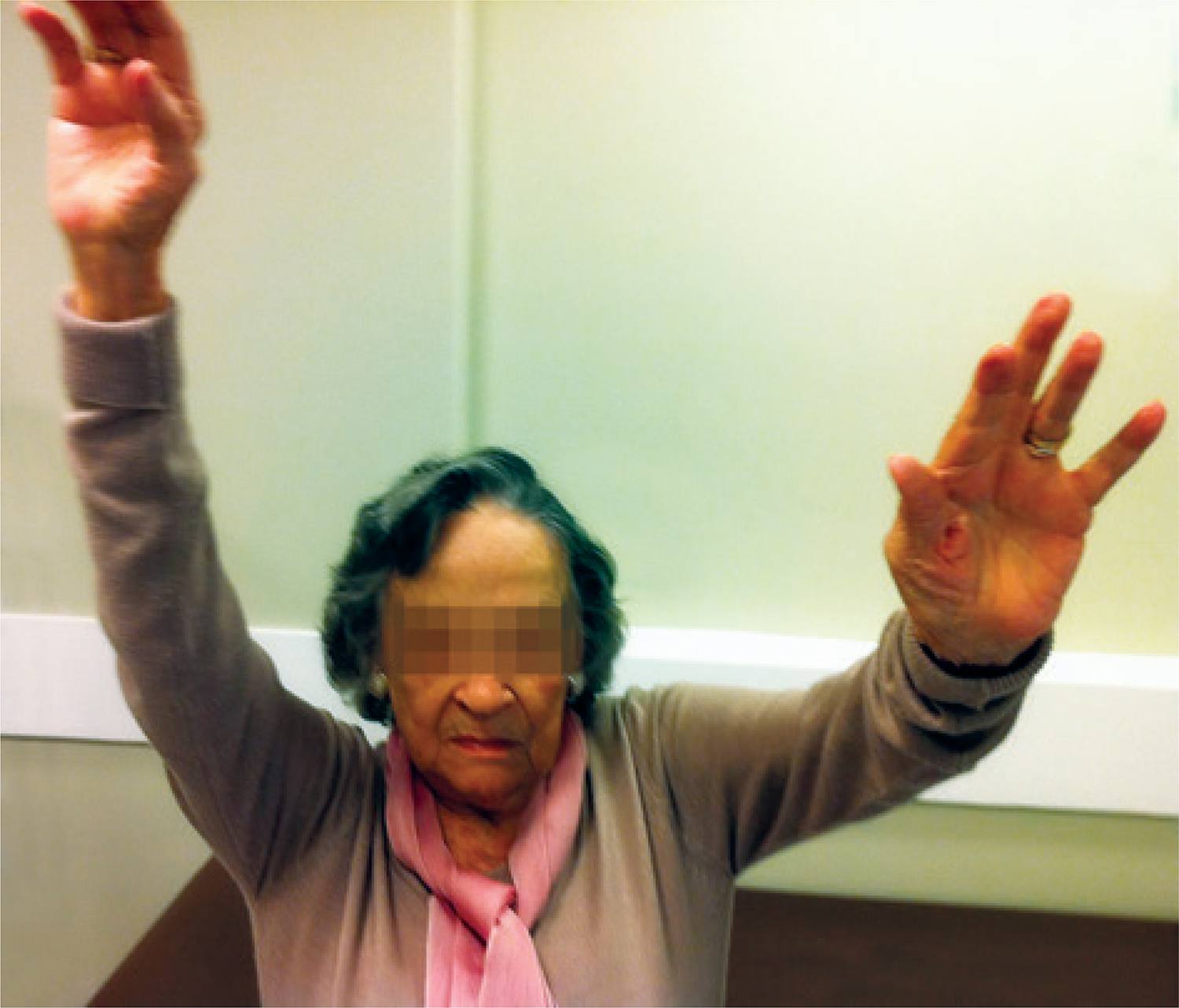ABSTRACT
Objective
To evaluate the clinical and functional behavior of patients undergoing cuff tear arthroplasty at different stages of the disease.
Methods
Cuff tear arthroplasty hemiarthroplasties were performed in 34 patients with rotator cuff arthropathy and associated comorbidities, classified according to Seebauer. The mean age was 76.3 years, and the sample comprised 23 females (67.6%) and 11 males (32.4%). The mean follow-up period was 21.7 months, and evaluations were performed using the Visual Analog Scale for pain and the Constant scale.
Results
There were no statistically significant differences in the mean reduction in the Visual Analog Scale or in the Constant scale increase between the female and male groups. The variation between the pre- and postoperative Visual Analog Scale and Constant scale evaluations was significant. There was also no statistically significant difference between the Seebauer classification groups regarding the mean Visual Analog Scale reduction, or the mean Constant scale increase.
Conclusion
Cuff tear arthroplasty shoulder hemiarthroplasty is a good option for rotator cuff arthropathy in patients with comorbidities.
Rotator cuff; Joint diseases; Arthroplasty; Hemiarthroplasty; Arthroplasty, replacement






